The most formidable domestic weapons
 Bashny.Net
Bashny.Net
Power RIA Novosti editors selected the top ten, in their opinion, weapons created in the Soviet and the Russian times.
Let's see what we can rightly be proud of!
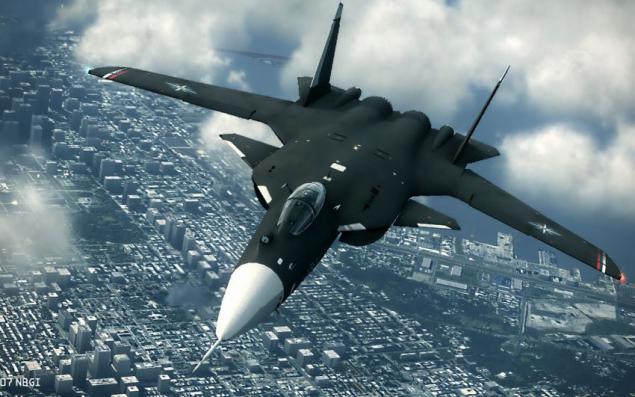
Anti-aircraft missile system S-300
C-300 - a family of air defense missile systems capable of striking targets at different altitudes, range - up to 300 km.
The first multi-channel system that can track up to 6 targets and to direct them to 12 missiles.
One of the main features - mobility. Time to deploy complex and the transfer from traveling to combat is 5 minutes.
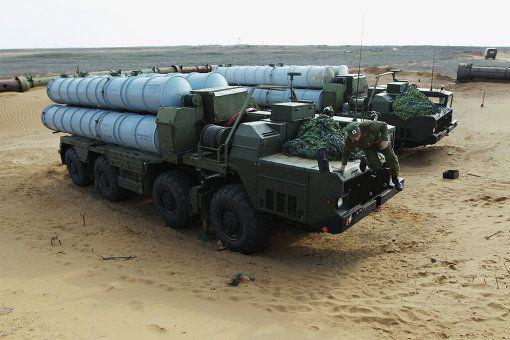
It operates mainly in Eastern Europe and Asia. This has never participated in actual combat, only in shooting practice. The experts recognized its very combat-capable air defense system.
As of 2010, Russia had, according to unofficial data, about 2,100 systems (including modifications). Further development of the S-300 has been the creation of S-400, put into service in 2007.

It was first demonstrated on Red Square on May 9, 1990 at a parade in honor of the 45th anniversary of Victory in the Great Patriotic War, then participated in other military parades.
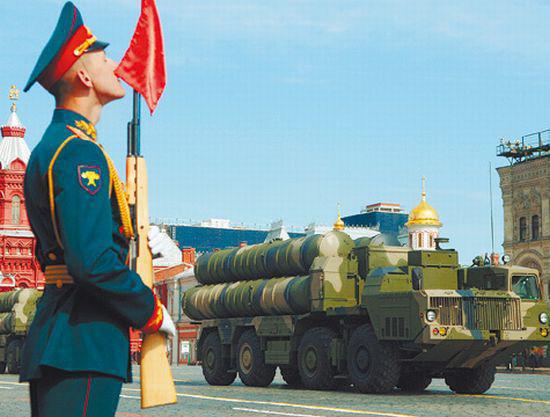
Kalashnikov
Kalashnikov designed with the participation of senior sergeant Mikhail Kalashnikov, was adopted in 1949 under the symbol AK-47. It was a weapon that meets the needs of the Army and served as the rifle and machine gun.
Legendary Kalashnikov rifle
From the 1950s on our time machine has undergone a number of modifications. Was reduced its weight, increased rate and accuracy of fire, reduced the caliber of the cartridge 5, 45 mm. There have also been set up under the automatic modification of the caliber cartridges 5, 56x45 mm NATO.
In 2011, "Izhmash" has developed a new modification of the AK-12, which in 2013 passed the state tests. It is planned that the AK-12 will be adopted by the Russian army.

In 1950 the license for the production of AK were given to 18 countries. Then another 11 states have launched the production of AK without a license. According to Rosoboronexport in 2009 the licenses of all previously received their states have already expired, however, production continues.
Tests Kalashnikov in the rain and in the sand.
AK is the present time in the armies 106 countries. According to approximate calculations, only it exists in the world from 70 to 105 million copies of various modifications.
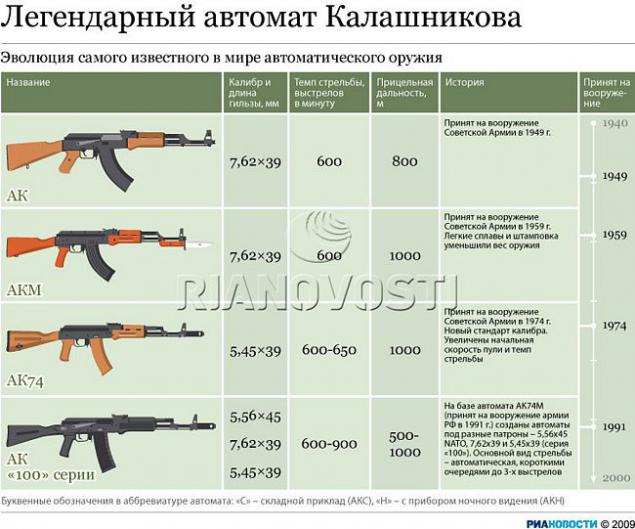
Several states including images Kalashnikov in his symbolism: Mozambique (emblem and flag since 1975), Zimbabwe (coat of arms, 1980), Burkina Faso (the coat of arms in 1984-1997).
Kalashnikov was included in the "Guinness Book of Records" - he and his modifications constitute 15% of all small arms in the world, being the most common small arms.
AK won first place in the list of the most significant inventions of the XX century, according to the French magazine "Liberation", leaving behind nuclear weapons and space technology.

Heavy strategic missile submarine Project 941 "Akula»
The first heavy missile strategic submarine cruisers (TRPKSN) Project 941 "Akula" was laid out in the company "Sevmash" in June 1976, launching took place on September 23, 1980. A new type of submarines positioned as a response to the construction of the US SSBNs "Ohio". The size of the boat is actually comparable to the size of a 9-storey building (length - 172 m, width - 23 m, the average sediment - 11, 2 m).
The main armament - missile complex D-19 with 20 three-stage solid-fuel ballistic missile R-39 "Option". Fighting the range rockets - 8300 km, warhead - divide 10 individually guided nuclear warheads of 100 kilotons of TNT each. Starting is possible both from a surface, and from underwater at depths up to 55 meters. In addition to strategic weapons on the boat has 6 torpedo tubes caliber of 533 mm and eight sets of MANPADS "Igla-1».

The crew of the boat is 160, of whom 52 -ofitsery. The boat has room for recreation, gym, swimming pool 4 × 2 m and 2 m deep, filled with fresh or salty seawater with the possibility of heating, solarium, sauna, fine oak planks, the "living area". Sailors called the "Shark" "floating Hilton».
Total plans to build seven boats of this project, but under the agreement SALT 1 series of six ships restricted (the seventh ship of the series - the TC-210 was disassembled at the factory). At present, five ships was decided to recycling. The last ship, the TK-208 "Dmitry Donskoy", was upgraded under the project 941UM and is used to test a new SLBM "Bulava».
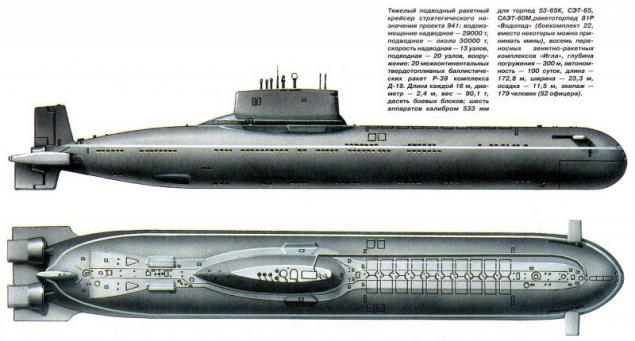
Interesting facts:
Displacement submarine of the "Shark" is more than a displacement of heavy aircraft carrier "Admiral Gorshkov", which is currently being introduced after a complete restructuring of the Indian Navy as an aircraft carrier "Vikramaditya».
6 submarines of the "Shark" listed in the Guinness Book of Records as the largest submarines in the world.
Before launching the bow below the waterline on board the submarine suffered a shark picture, shark stripes later appeared on the form of the crew.

Air defense missile-gun complex "Carapace-C1»
«Shell-C1" - a Russian self-propelled anti-aircraft missile-gun system (ZRPK) ground-based was created in 1994. November 16, 2012 Order of the Prime Minister of Russia Dmitry Medvedev ZRPK «shell-C1" adopted by the Russian Army.
ZRPK Carapace-C1
The system is designed for short-range covering civil and military installations from all current and future air threats. It may also carry out protection defended object from ground and surface threats.
Carapace-C1 is ZRPK short-range, are placed on the crawler, wheeled truck, a trailer or a stationary. Management is carried out by two or three operators. Air defense carried automatic guns and guided missiles.

Features of the complex «shell-C1" is the combination of multi-channel capture and tracking of targets with cannon and artillery, to create a continuous zone interception target from 0 m in height and 200 meters distance up to 15 km in altitude and 20 km range. Two independent means of guidance - radar and optical-electronic system allows the capture of the four targets simultaneously. The maximum capture rate is 10 goals in a minute.
Approximate price per IRC «shell-C1" with exports ranging from 13, 15 to 14, 67 million US dollars.
Complexes «shell-C1" are in service of Algeria, Brazil, Iran, Morocco, UAE, Oman, Syria, which has 36 complexes 96K6, delivered between 2008 and 2011 and, according to the contract of 2006, may receive from Russia 50 complexes 96K6 and 700 missiles for them.
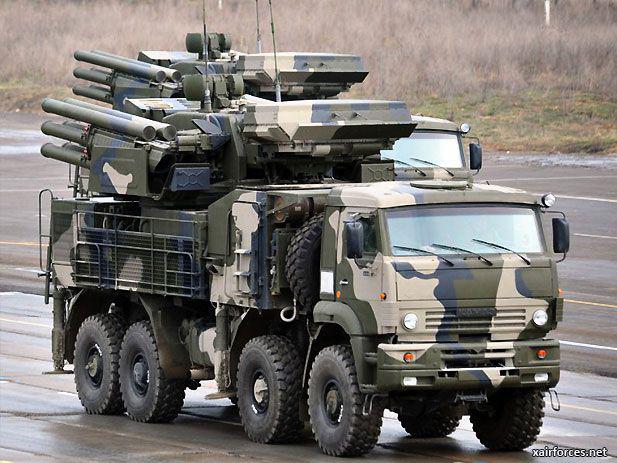
Multipurpose vysokomanёvrenny all-weather fighter fourth generation Su-27
Su-27 - Soviet / Russian multipurpose all-weather fighter vysokomanёvrenny fourth generation, developed by the Sukhoi Design Bureau.
First flew on May 20, 1977 Serial production was deployed in 1982. In 1984, a fighter under the designation Su-27 adopted by the Soviet Army. The first aircraft was demonstrated to the public in June 1989 at Le Bourget.
The Su-27 was the basis for a large number of modifications: combat training of the Su-27UB, carrier-based fighter Su-33 multipurpose fighters Su-30, Su-27M, Su-35, the Su-34 and others.
Main combat use - heavy fighter interceptor long-range, jet air superiority. The aircraft can climb to an altitude of 18, 5 km and reach speeds of up to 1400 km / h, the maximum flight range of 3530 km. The armed fighters include: gun, 30 mm, guided missiles "Air-air", unguided rockets, bombs caliber from 100 to 500 kg.

To date, the Su 27 is one of the main Russian Air Force aircraft (as of 2013 about 260 units of the Su-27), is in service in the CIS countries, India, China and other countries.
Russian fighter Su-27 is recognized as one of the best combat aircraft of the last century, according to the international journal Flight International.
In 1996, the Russian developers Eagle Dynamics has been created and published by Strategic Simulations first version of the computer game flight simulator "Su-27 Flanker." The game has a high level of realism and high-quality implementation of Flight model. The consultants in the development of the program were experts EDO "Sukhoi».
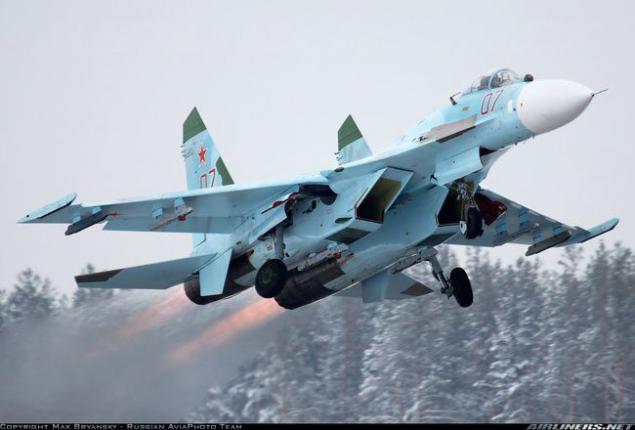
Attack helicopter Ka-52
The Ka-52 ("Alligator") - an all-weather non-stop combat helicopter of the new generation. It is designed to destroy ground targets, low-speed air targets and enemy personnel. The Ka-52 is a modification of the double attack helicopter Ka-50 ("Black Shark»).
Development of modernized double Ka-52 started in 1994. His first flight of the Ka-52 made June 25, 1997.
Ka-52 has a takeoff weight of 10,800 kg in, hover ceiling - 3900 m, the maximum rate of climb - 13, 9 m / s, the maximum speed - 300 km / h, range - 460 km. The Ka-52 is adopted, consisting of 12 supersonic ATGM "Whirlwind", unified containers with machine-gun and cannon armament, 80 unguided rockets caliber 80 mm rockets of class "air-to-air," the 30-mm gun 2A42 with ammunition, 500 rounds .
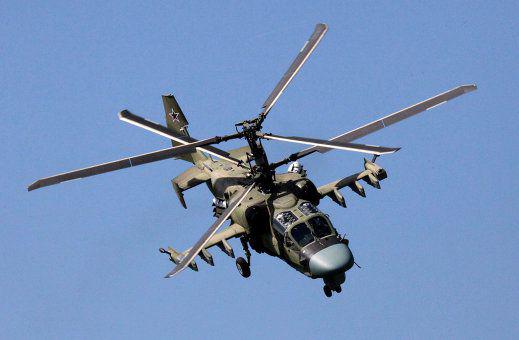
Unlike the Ka-50 for operation of the new complex optronic and radar reconnaissance equipment Ka-52 needed a second crew member. The co-pilot had decided to place next to the first, but not to each other, as is customary in most military helicopters of the world, so as to facilitate their interaction. In addition, it eliminates the need for duplication of a number of devices. Piloting a helicopter can carry two pilots without limits.
The helicopter is equipped with a signature reduction devices, electronic system of protection and means of active resistance. Vital systems and components of the Ka-52 are duplicated and protected fuel tanks explosion-proof, fire-extinguishing system installed standalone. Ejection seats with rocket-parachute system enables both crew members to leave the helicopter in all flight modes. The helicopter shooting screws installed. In terms of booking cockpit Ka-52 has no analogues in the world.
Also developed naval version of the helicopter - Ka-52K "Katran". It is characterized by the presence of the mechanism of folding blades and the support arm, increased landing gear. It is planned that the naval version of the Ka-52 will become the main striking force of the type of helicopter carriers "Mistral».
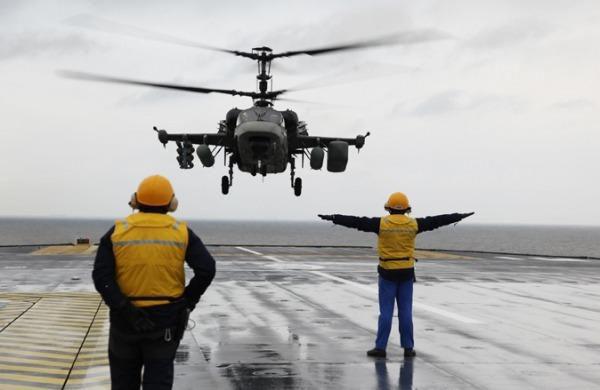
Multipurpose helicopter Mi-8
Mi-8 - the average multi-purpose helicopter, which is used for passenger and freight traffic. It performs a wide range of tasks in all regions of the world.
The development of the V-8 helicopter (MI-8) began at OKB. ML Mile in May 1960 to replace the multi-piston Mi-4. Mi-8 was created as a deep modernization of the Mi-4. It surpasses its predecessor on the maximum capacity of 2, 5 times speed in the 1 and 4 times. The helicopter was developed simultaneously in two versions: passenger Mi-8P and transport Mi-8T. The serial production of the Mi-8 began in 1965.
The military version of the Mi-8T has pylons for the suspension arms (unguided rockets, bombs). The following modification of the military Mi-8TV has reinforced pylons for the suspension of a large number of weapons and machine guns in the bow cabin.

Mi-8Mt - modification of the helicopter, which was the logical culmination of the transition from vehicle to transport military helicopters. To combat missiles "land air" are dissipating hot gases of the engines, shooting targets and false heat of pulsed infrared signals. In the 1979 1988's Mi-8Mt involved in the military conflict in Afghanistan.
Mi-8 can be used in solving a wide variety of tasks: to provide fire support, suppression of firing points, airborne delivery, transportation of ammunition, weapons, goods, food, medical supplies, evacuation of wounded and dead.
Helicopter unpretentious and fail-safe. Mi-8 abroad, and we have called the "workhorse", "soldier's machine." Mi-8 helicopters are the most common in the world of transport helicopters.
In the history of world helicopter on the total number of cars produced - over 12 thousand. The Mi-8 is unique among devices of its class.
According to the number of modifications, of which there are more than a hundred, the Mi-8 is a world record holder. On the Mi-8 helicopter in 1964. 1969 it was established seven world records.
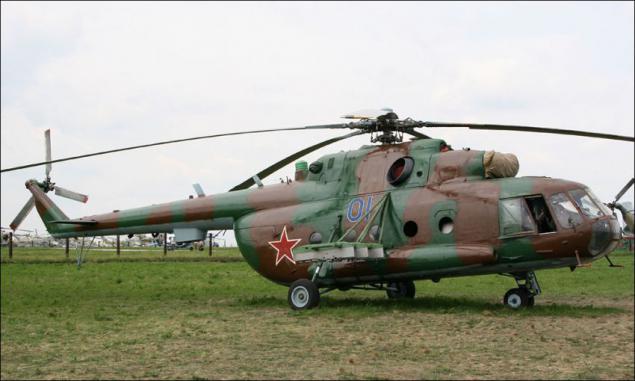
Strategic missile system of the third generation of the P-36M
P-36M - Soviet strategic missile system of the third generation, armed with heavy two-stage liquid ampulizirovannoy intercontinental ballistic missile 15A14, which is located in silos. The complex was designed under the direction of CB "South" in the late 1960s. Close-coupled version of the R-36M was adopted on November 20, 1978. The maximum number of deployed missiles were in 1979. - 190 units. ICBM R-36M had on the west designation SS-18 mod 1, 2, 3 «Satan» (PC-20A).
The complex includes: launcher - stationary shaft type; rocket - two-stage rocket engine with fuel in the high-boiling components, is triggered by a mortar; Control system - inertial, autonomous, running-board computer.
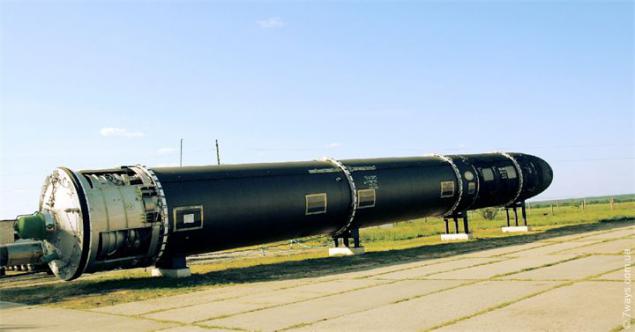
The rocket complex P-36M, for those times, was the most powerful in the world. According to its characteristics complex than its predecessors in many ways. In particular, in terms of accuracy - into 2-3 times; of readiness - 4 times; Energy missile capabilities - 1.4 times; on the protection of the launcher - 15-30 times; on the original warranty period - 1, 4 times.
Rockets for the complex produced in three versions: monoblock light having a charge capacity of 8 megatonnes (Mt), and with a range of 16,000 km; Heavy monoblock having a charge of 25 Mt, and with a range of 11,200 km; with multiple warheads to 8 units with a capacity of 1 Mt each.
In December 2012 it was decided that the modification of the R-36M2 "Voivod", which is in service with the Russian Federation, will remain a part of the Strategic Missile Forces until 2022, as far missile system with this missile in 1, 5 times more than the warranty service , having stood on duty for 24 years.

Battle railway missile system
Work on the creation BZHRK with a missile RS-22 (SS-24 «Scalpel») began in the mid-1970s. The developer acted CB "Southern" Ukrainian Dnipropetrovsk. His field trials were held in 1985-1987. November 28th, 1989 the complex was adopted.
BZHRK designed as a train of two or three locomotives and special railcars that were similar in appearance to the passenger and refrigerated. The cars were placed transport and launch containers (TLC) with intercontinental ballistic missile launch control centers, technology and technical systems, security equipment, personnel and life support systems.
Alert BZHRK and rocket is launched on their permanent deployment locations of the complex, and on combat patrol routes (IBE). As the IBE used sections of railways of general use.
High mobility BZHRK achieved the ability to move quickly on the railways. Its ability to provide disperse the uncertainty of location, which is the basis of high survivability in a war with the use of both conventional and nuclear weapons.
The design and technical solutions, built into a complex that would ensure long-term livelihoods of combat duty and off-line due Ammunition capacity reserves of fuel and lubricants, food, water and autonomous sources of electricity.
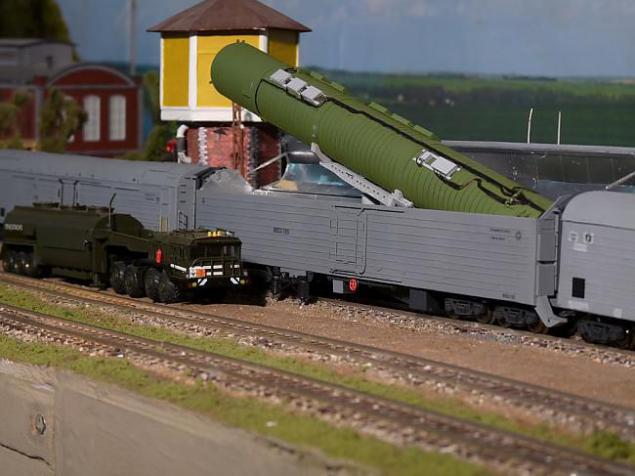
In total, the Soviet Union deployed missiles three divisions, which were located near Kostroma, Krasnoyarsk and Perm around.
After the warranty period exploitation missile RS-22 and railway complex was decided to eliminate them. Nowadays, the complex is fully withdrawn from the Strategic Missile Forces (RVSN). Last Train BZHRK Kostroma missile division was withdrawn from combat duty 12 August 2005.
In 2013, Russia has returned to the issue of BZHRK. According to the Defense Ministry, the new systems can be expected by 2020.
Let's see what we can rightly be proud of!

Anti-aircraft missile system S-300
C-300 - a family of air defense missile systems capable of striking targets at different altitudes, range - up to 300 km.
The first multi-channel system that can track up to 6 targets and to direct them to 12 missiles.
One of the main features - mobility. Time to deploy complex and the transfer from traveling to combat is 5 minutes.

It operates mainly in Eastern Europe and Asia. This has never participated in actual combat, only in shooting practice. The experts recognized its very combat-capable air defense system.
As of 2010, Russia had, according to unofficial data, about 2,100 systems (including modifications). Further development of the S-300 has been the creation of S-400, put into service in 2007.

It was first demonstrated on Red Square on May 9, 1990 at a parade in honor of the 45th anniversary of Victory in the Great Patriotic War, then participated in other military parades.

Kalashnikov
Kalashnikov designed with the participation of senior sergeant Mikhail Kalashnikov, was adopted in 1949 under the symbol AK-47. It was a weapon that meets the needs of the Army and served as the rifle and machine gun.
Legendary Kalashnikov rifle
From the 1950s on our time machine has undergone a number of modifications. Was reduced its weight, increased rate and accuracy of fire, reduced the caliber of the cartridge 5, 45 mm. There have also been set up under the automatic modification of the caliber cartridges 5, 56x45 mm NATO.
In 2011, "Izhmash" has developed a new modification of the AK-12, which in 2013 passed the state tests. It is planned that the AK-12 will be adopted by the Russian army.

In 1950 the license for the production of AK were given to 18 countries. Then another 11 states have launched the production of AK without a license. According to Rosoboronexport in 2009 the licenses of all previously received their states have already expired, however, production continues.
Tests Kalashnikov in the rain and in the sand.
AK is the present time in the armies 106 countries. According to approximate calculations, only it exists in the world from 70 to 105 million copies of various modifications.

Several states including images Kalashnikov in his symbolism: Mozambique (emblem and flag since 1975), Zimbabwe (coat of arms, 1980), Burkina Faso (the coat of arms in 1984-1997).
Kalashnikov was included in the "Guinness Book of Records" - he and his modifications constitute 15% of all small arms in the world, being the most common small arms.
AK won first place in the list of the most significant inventions of the XX century, according to the French magazine "Liberation", leaving behind nuclear weapons and space technology.

Heavy strategic missile submarine Project 941 "Akula»
The first heavy missile strategic submarine cruisers (TRPKSN) Project 941 "Akula" was laid out in the company "Sevmash" in June 1976, launching took place on September 23, 1980. A new type of submarines positioned as a response to the construction of the US SSBNs "Ohio". The size of the boat is actually comparable to the size of a 9-storey building (length - 172 m, width - 23 m, the average sediment - 11, 2 m).
The main armament - missile complex D-19 with 20 three-stage solid-fuel ballistic missile R-39 "Option". Fighting the range rockets - 8300 km, warhead - divide 10 individually guided nuclear warheads of 100 kilotons of TNT each. Starting is possible both from a surface, and from underwater at depths up to 55 meters. In addition to strategic weapons on the boat has 6 torpedo tubes caliber of 533 mm and eight sets of MANPADS "Igla-1».

The crew of the boat is 160, of whom 52 -ofitsery. The boat has room for recreation, gym, swimming pool 4 × 2 m and 2 m deep, filled with fresh or salty seawater with the possibility of heating, solarium, sauna, fine oak planks, the "living area". Sailors called the "Shark" "floating Hilton».
Total plans to build seven boats of this project, but under the agreement SALT 1 series of six ships restricted (the seventh ship of the series - the TC-210 was disassembled at the factory). At present, five ships was decided to recycling. The last ship, the TK-208 "Dmitry Donskoy", was upgraded under the project 941UM and is used to test a new SLBM "Bulava».

Interesting facts:
Displacement submarine of the "Shark" is more than a displacement of heavy aircraft carrier "Admiral Gorshkov", which is currently being introduced after a complete restructuring of the Indian Navy as an aircraft carrier "Vikramaditya».
6 submarines of the "Shark" listed in the Guinness Book of Records as the largest submarines in the world.
Before launching the bow below the waterline on board the submarine suffered a shark picture, shark stripes later appeared on the form of the crew.

Air defense missile-gun complex "Carapace-C1»
«Shell-C1" - a Russian self-propelled anti-aircraft missile-gun system (ZRPK) ground-based was created in 1994. November 16, 2012 Order of the Prime Minister of Russia Dmitry Medvedev ZRPK «shell-C1" adopted by the Russian Army.
ZRPK Carapace-C1
The system is designed for short-range covering civil and military installations from all current and future air threats. It may also carry out protection defended object from ground and surface threats.
Carapace-C1 is ZRPK short-range, are placed on the crawler, wheeled truck, a trailer or a stationary. Management is carried out by two or three operators. Air defense carried automatic guns and guided missiles.

Features of the complex «shell-C1" is the combination of multi-channel capture and tracking of targets with cannon and artillery, to create a continuous zone interception target from 0 m in height and 200 meters distance up to 15 km in altitude and 20 km range. Two independent means of guidance - radar and optical-electronic system allows the capture of the four targets simultaneously. The maximum capture rate is 10 goals in a minute.
Approximate price per IRC «shell-C1" with exports ranging from 13, 15 to 14, 67 million US dollars.
Complexes «shell-C1" are in service of Algeria, Brazil, Iran, Morocco, UAE, Oman, Syria, which has 36 complexes 96K6, delivered between 2008 and 2011 and, according to the contract of 2006, may receive from Russia 50 complexes 96K6 and 700 missiles for them.

Multipurpose vysokomanёvrenny all-weather fighter fourth generation Su-27
Su-27 - Soviet / Russian multipurpose all-weather fighter vysokomanёvrenny fourth generation, developed by the Sukhoi Design Bureau.
First flew on May 20, 1977 Serial production was deployed in 1982. In 1984, a fighter under the designation Su-27 adopted by the Soviet Army. The first aircraft was demonstrated to the public in June 1989 at Le Bourget.
The Su-27 was the basis for a large number of modifications: combat training of the Su-27UB, carrier-based fighter Su-33 multipurpose fighters Su-30, Su-27M, Su-35, the Su-34 and others.
Main combat use - heavy fighter interceptor long-range, jet air superiority. The aircraft can climb to an altitude of 18, 5 km and reach speeds of up to 1400 km / h, the maximum flight range of 3530 km. The armed fighters include: gun, 30 mm, guided missiles "Air-air", unguided rockets, bombs caliber from 100 to 500 kg.

To date, the Su 27 is one of the main Russian Air Force aircraft (as of 2013 about 260 units of the Su-27), is in service in the CIS countries, India, China and other countries.
Russian fighter Su-27 is recognized as one of the best combat aircraft of the last century, according to the international journal Flight International.
In 1996, the Russian developers Eagle Dynamics has been created and published by Strategic Simulations first version of the computer game flight simulator "Su-27 Flanker." The game has a high level of realism and high-quality implementation of Flight model. The consultants in the development of the program were experts EDO "Sukhoi».

Attack helicopter Ka-52
The Ka-52 ("Alligator") - an all-weather non-stop combat helicopter of the new generation. It is designed to destroy ground targets, low-speed air targets and enemy personnel. The Ka-52 is a modification of the double attack helicopter Ka-50 ("Black Shark»).
Development of modernized double Ka-52 started in 1994. His first flight of the Ka-52 made June 25, 1997.
Ka-52 has a takeoff weight of 10,800 kg in, hover ceiling - 3900 m, the maximum rate of climb - 13, 9 m / s, the maximum speed - 300 km / h, range - 460 km. The Ka-52 is adopted, consisting of 12 supersonic ATGM "Whirlwind", unified containers with machine-gun and cannon armament, 80 unguided rockets caliber 80 mm rockets of class "air-to-air," the 30-mm gun 2A42 with ammunition, 500 rounds .

Unlike the Ka-50 for operation of the new complex optronic and radar reconnaissance equipment Ka-52 needed a second crew member. The co-pilot had decided to place next to the first, but not to each other, as is customary in most military helicopters of the world, so as to facilitate their interaction. In addition, it eliminates the need for duplication of a number of devices. Piloting a helicopter can carry two pilots without limits.
The helicopter is equipped with a signature reduction devices, electronic system of protection and means of active resistance. Vital systems and components of the Ka-52 are duplicated and protected fuel tanks explosion-proof, fire-extinguishing system installed standalone. Ejection seats with rocket-parachute system enables both crew members to leave the helicopter in all flight modes. The helicopter shooting screws installed. In terms of booking cockpit Ka-52 has no analogues in the world.
Also developed naval version of the helicopter - Ka-52K "Katran". It is characterized by the presence of the mechanism of folding blades and the support arm, increased landing gear. It is planned that the naval version of the Ka-52 will become the main striking force of the type of helicopter carriers "Mistral».

Multipurpose helicopter Mi-8
Mi-8 - the average multi-purpose helicopter, which is used for passenger and freight traffic. It performs a wide range of tasks in all regions of the world.
The development of the V-8 helicopter (MI-8) began at OKB. ML Mile in May 1960 to replace the multi-piston Mi-4. Mi-8 was created as a deep modernization of the Mi-4. It surpasses its predecessor on the maximum capacity of 2, 5 times speed in the 1 and 4 times. The helicopter was developed simultaneously in two versions: passenger Mi-8P and transport Mi-8T. The serial production of the Mi-8 began in 1965.
The military version of the Mi-8T has pylons for the suspension arms (unguided rockets, bombs). The following modification of the military Mi-8TV has reinforced pylons for the suspension of a large number of weapons and machine guns in the bow cabin.

Mi-8Mt - modification of the helicopter, which was the logical culmination of the transition from vehicle to transport military helicopters. To combat missiles "land air" are dissipating hot gases of the engines, shooting targets and false heat of pulsed infrared signals. In the 1979 1988's Mi-8Mt involved in the military conflict in Afghanistan.
Mi-8 can be used in solving a wide variety of tasks: to provide fire support, suppression of firing points, airborne delivery, transportation of ammunition, weapons, goods, food, medical supplies, evacuation of wounded and dead.
Helicopter unpretentious and fail-safe. Mi-8 abroad, and we have called the "workhorse", "soldier's machine." Mi-8 helicopters are the most common in the world of transport helicopters.
In the history of world helicopter on the total number of cars produced - over 12 thousand. The Mi-8 is unique among devices of its class.
According to the number of modifications, of which there are more than a hundred, the Mi-8 is a world record holder. On the Mi-8 helicopter in 1964. 1969 it was established seven world records.

Strategic missile system of the third generation of the P-36M
P-36M - Soviet strategic missile system of the third generation, armed with heavy two-stage liquid ampulizirovannoy intercontinental ballistic missile 15A14, which is located in silos. The complex was designed under the direction of CB "South" in the late 1960s. Close-coupled version of the R-36M was adopted on November 20, 1978. The maximum number of deployed missiles were in 1979. - 190 units. ICBM R-36M had on the west designation SS-18 mod 1, 2, 3 «Satan» (PC-20A).
The complex includes: launcher - stationary shaft type; rocket - two-stage rocket engine with fuel in the high-boiling components, is triggered by a mortar; Control system - inertial, autonomous, running-board computer.

The rocket complex P-36M, for those times, was the most powerful in the world. According to its characteristics complex than its predecessors in many ways. In particular, in terms of accuracy - into 2-3 times; of readiness - 4 times; Energy missile capabilities - 1.4 times; on the protection of the launcher - 15-30 times; on the original warranty period - 1, 4 times.
Rockets for the complex produced in three versions: monoblock light having a charge capacity of 8 megatonnes (Mt), and with a range of 16,000 km; Heavy monoblock having a charge of 25 Mt, and with a range of 11,200 km; with multiple warheads to 8 units with a capacity of 1 Mt each.
In December 2012 it was decided that the modification of the R-36M2 "Voivod", which is in service with the Russian Federation, will remain a part of the Strategic Missile Forces until 2022, as far missile system with this missile in 1, 5 times more than the warranty service , having stood on duty for 24 years.

Battle railway missile system
Work on the creation BZHRK with a missile RS-22 (SS-24 «Scalpel») began in the mid-1970s. The developer acted CB "Southern" Ukrainian Dnipropetrovsk. His field trials were held in 1985-1987. November 28th, 1989 the complex was adopted.
BZHRK designed as a train of two or three locomotives and special railcars that were similar in appearance to the passenger and refrigerated. The cars were placed transport and launch containers (TLC) with intercontinental ballistic missile launch control centers, technology and technical systems, security equipment, personnel and life support systems.
Alert BZHRK and rocket is launched on their permanent deployment locations of the complex, and on combat patrol routes (IBE). As the IBE used sections of railways of general use.
High mobility BZHRK achieved the ability to move quickly on the railways. Its ability to provide disperse the uncertainty of location, which is the basis of high survivability in a war with the use of both conventional and nuclear weapons.
The design and technical solutions, built into a complex that would ensure long-term livelihoods of combat duty and off-line due Ammunition capacity reserves of fuel and lubricants, food, water and autonomous sources of electricity.

In total, the Soviet Union deployed missiles three divisions, which were located near Kostroma, Krasnoyarsk and Perm around.
After the warranty period exploitation missile RS-22 and railway complex was decided to eliminate them. Nowadays, the complex is fully withdrawn from the Strategic Missile Forces (RVSN). Last Train BZHRK Kostroma missile division was withdrawn from combat duty 12 August 2005.
In 2013, Russia has returned to the issue of BZHRK. According to the Defense Ministry, the new systems can be expected by 2020.
Tags
See also
The most powerful non-nuclear weapon
Oscar No
To the birthday of Freddie Mercury: 10 immortals clips of Queen.
Not like at all! Original Christmas tree with their hands
"Bastion" - a reliable anti-ship weapon
Surprise from Russia
Armored train
Confronting the Navy and the US Navy

















